Table of Contents
Introduction
Market Overview
Things to Consider When Selecting Snowboard Boots
Best Snowboard Boots of 2024: Models and Features
Conclusion
Introduction
In 2024, the snowboard boot market takes a bold stride forward, offering an array of advanced options designed for superior performance and comfort. This year, enthusiasts will witness the evolution of boot technology, with innovative features tailored to enhance responsiveness and provide a custom fit. As the cornerstone of any rider’s gear, selecting the right boot is more than a choice; it’s a commitment to excellence. Understanding the latest in flex ratings, material durability, and lacing systems will be key to navigating this diverse market.
Market Overview
The global ski gear and equipment market, valued at USD 1.70 billion in 2023 and projected to reach USD 2.26 billion by 2032 with a CAGR of 3.2%, underscores the burgeoning interest and financial investment in winter sports, including snowboarding. Snowboard boots, as a critical component of this sport, benefit directly from the expanding market and evolving consumer demands within the broader ski and snowboard industry, which in the U.S. alone, saw the resorts industry valued at approximately $4.4 billion in 2022. With a steady growth rate observed over recent years and an expected continuation up to 2029, the emphasis on quality, performance, and innovation in snowboard boots is more important than ever to cater to the growing and evolving market of enthusiasts and professionals alike.
The upcoming season is expected to witness significant shifts in consumer preferences, with a tilt towards boots that offer a blend of performance, comfort, and durability. The dominant brands in the market are set to introduce a variety of new features, including improved lacing systems, better material durability, and enhanced flex ratings suitable for a range of terrains and riding styles. These innovations are aimed at providing snowboarders with an unmatched experience, combining the thrill of the sport with the assurance of safety and reliability.
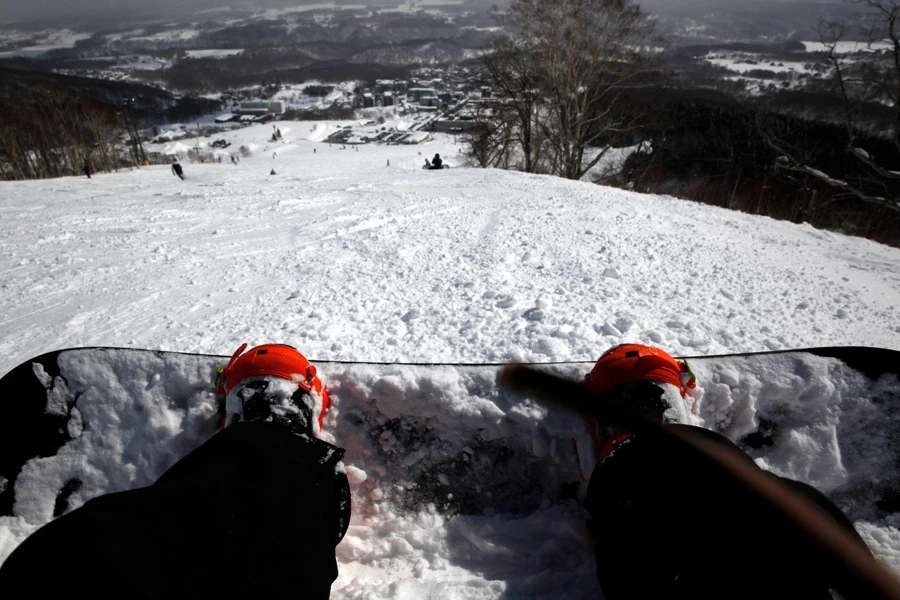
Things to Consider When Selecting Snowboard Boots
1. Flex Spectrum:
Snowboard boots tend to be more flexible than ski boots, allowing for a wider range of motion. Snowboard boots are available in a range of flexibilities, typically categorized as soft, medium, or stiff. The flex of a boot influences how it responds to movements and the level of support it provides. It’s important to note that the flex rating is somewhat subjective and varies across brands.
- Soft Flex: Ideal for long, comfortable days on the mountain, soft-flexing boots are preferred by park riders and beginners due to their forgiving nature and ease of maneuverability.
- Medium Flex: Offering a balance between mobility and support, medium-flex boots are versatile and suitable for all-mountain performance, catering to a wide range of riders.
- Stiff Flex: Designed for maximum support and control, stiff boots are favored by riders who prioritize edge power and speed, especially in challenging conditions like off-piste and icy terrains.
2. Matching Flex with Riding Style:
Different styles of snowboarding benefit from different levels of boot flexibility.
- All-Mountain (Most Riders): Soft to medium flex is generally preferred for its versatility and comfort across various terrains.
- All-Mountain (Racers): Stiff boots are chosen for their superior control and responsiveness at high speeds.
- Freeride: Stiff boots are again preferred for their ability to provide power and precision in off-piste and challenging conditions.
- Freestyle: Soft boots are ideal for park riding and tricks due to their flexibility and ease of movement.
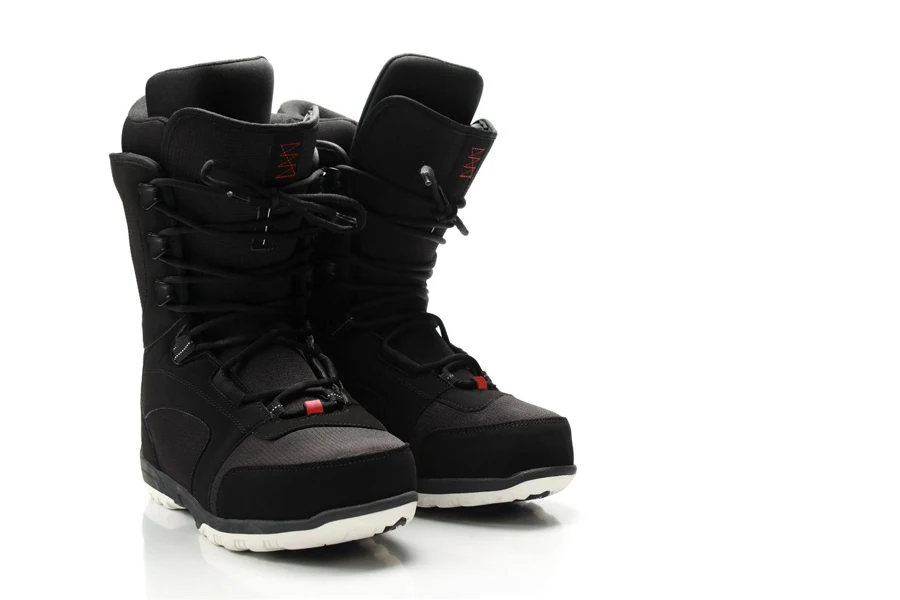
3. Lacing Systems:
Snowboard boots offer various lacing systems, each with its own set of benefits, affecting fit, ease of use, and adjustability. Understanding these systems can help customers make decisions based on their needs and preferences.
Traditional Laces:
Pros:
- Customizable Fit: Allow for manual adjustment of tightness for a precise fit.
- Cost-Effective: Generally cheaper and easily replaceable.
Cons:
- Manual Adjustment: Difficult to adjust with cold hands or gloves.
- Loosening: Tend to loosen over time, needing frequent re-tightening.
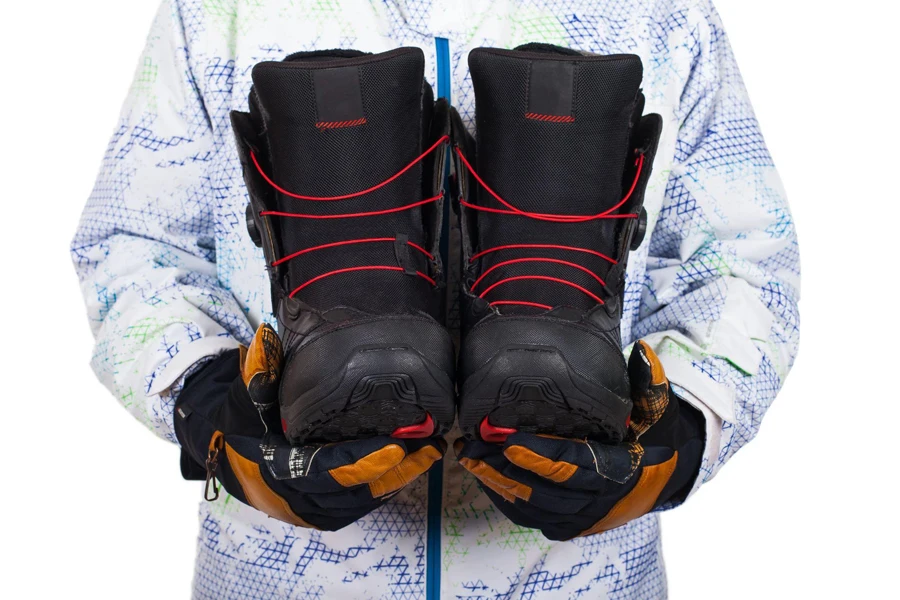
Quick-Pull Laces:
Pros:
- Speed and Convenience: Quick adjustments are possible, beneficial for on-the-go changes.
- Zonal Tightening: Allows independent adjustment of different boot areas for a tailored fit.
Cons:
- Complexity: The system may seem intricate initially or challenging to fix if damaged.
- Durability: Though sturdy, replacing a broken lace can be more complex than with traditional laces.
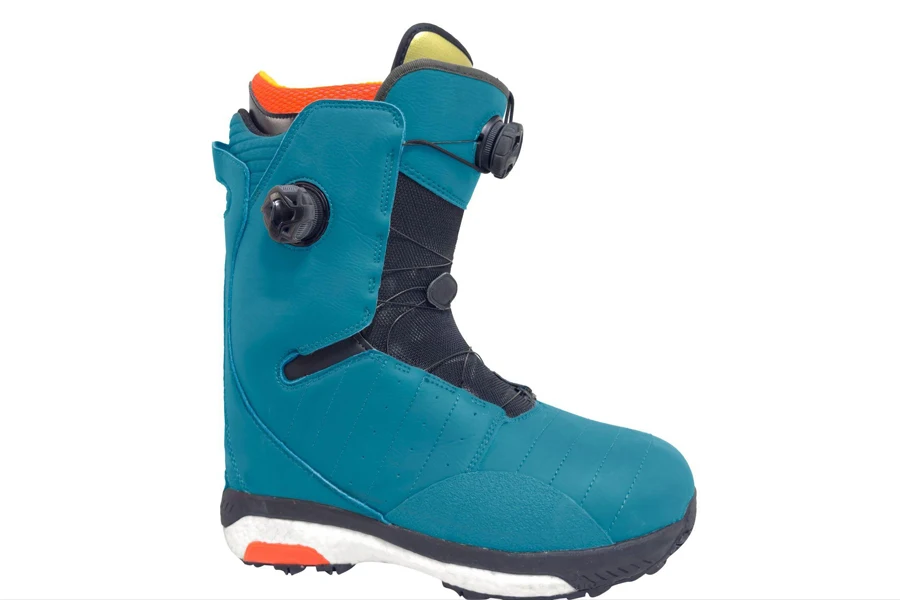
BOA System:
Pros:
- Enables micro-adjustments for a precision fit with a simple dial turn.
- Easy to use, even with gloves on, allowing one-handed adjustments.
Cons:
- Increases the boots’ overall cost.
- May create pressure points where cables attach to the boots.
NOTE: The BOA Fit System is revolutionizing ski & snowboard boots with its micro-adjustable dial, strong cables, and even pressure distribution, offering a precise, comfortable fit over traditional laces and buckles. A study involving 22 skiers compared BOA to Buckle boots, revealing that BOA boots provided better performance, easier carving, and more comfort by efficiently transferring force to the skis while reducing foot pressure. This highlights the BOA system’s role in enhancing skiing experience and comfort.
4. Style and Design of Snowboard Boots:
Personal Expression:
- Snowboard boots are more than just functional gear; they reflect the rider’s personality and style. The design and aesthetics can influence a rider’s confidence and performance on the mountain.
Variety in Colors and Patterns:
- Offering a wide range of colors and patterns allows customers to choose boots that reflect their personal style. Options might include bold and bright colors, sleek and subtle designs, or thematic patterns that resonate with individual preferences.
Collaborations and Limited Editions:
- Highlighting special collaborations with artists or brands and promoting limited edition designs can attract customers looking for exclusivity and personal expression. These boots often feature unique styles and are marketed as collector’s items or fashion statements.
Customization Options:
- Some brands might offer customization options, allowing riders to select colors, patterns, or even add personal logos and text to their boots, further enhancing the personal connection between the rider and their gear.
Gender and Age-Specific Designs:
- Offering styles that cater to different demographics, including men, women, and children, ensures that all riders can find boots that suit their taste and fit their needs.
5. Material and Texture:
- Ethylene Vinyl Acetate (EVA): Commonly used in the liners of snowboard boots, EVA is a lightweight, moldable polymer that provides cushioning, stability, and insulation.
- Synthetic Materials: Most snowboard boots are made of durable synthetic materials that offer resilience and comfort for long days on the mountain.
Liners:
- Non-moldable (stock): Provide generic padding and stability.
- Thermoformable Foam Liners: Use your foot’s heat to achieve a custom fit.
- Custom Moldable Liners: Use an artificial heat source for a custom fit.
6. Compatibility with Bindings:
Snowboard boots also must be compatible with bindings. Retailers should provide clear information about the compatibility of boots with different types of bindings available on the market.
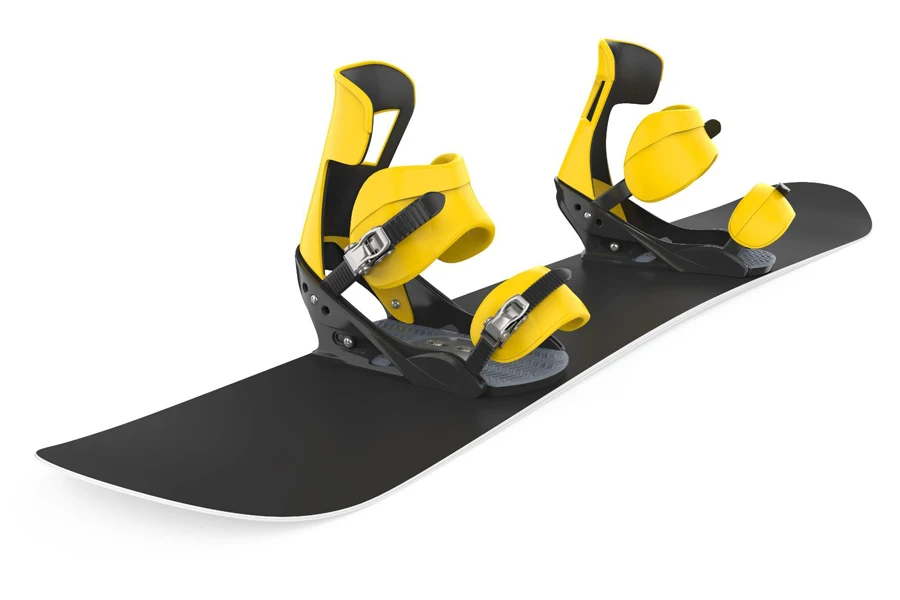
Strap-In Bindings: The most common type of bindings, featuring straps that go over the top of the boots to secure them in place.
Compatibility: Strap-in bindings are versatile and generally compatible with most snowboard boots. Retailers should ensure that boots fit snugly and securely within the bindings without excessive movement or space.
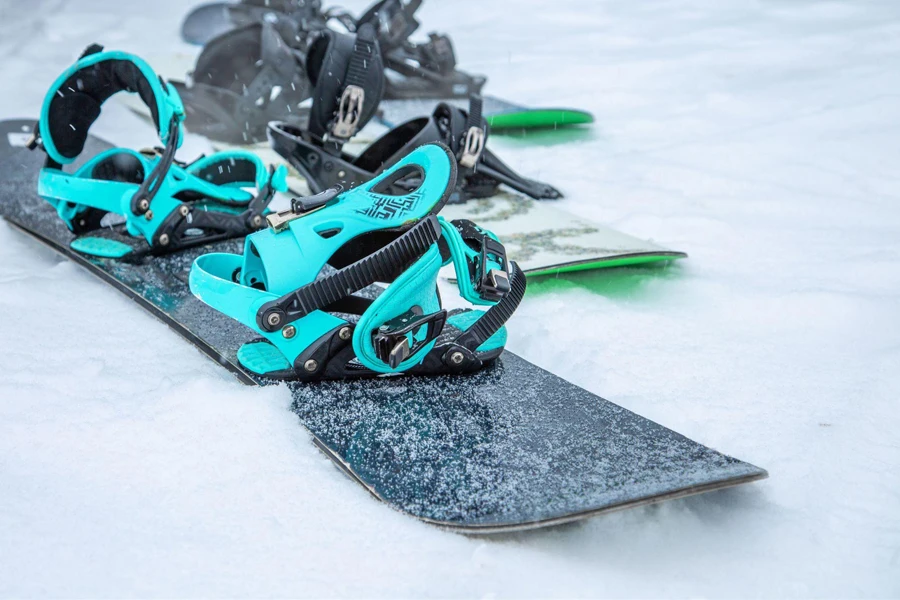
Rear Entry Bindings: These bindings have a hinged high back allowing for quick entry and exit of the boot.
Compatibility: Like strap-in bindings, rear entry models are compatible with most boots. The key is to ensure the boot’s profile matches the binding’s base and highback for efficient control and comfort.
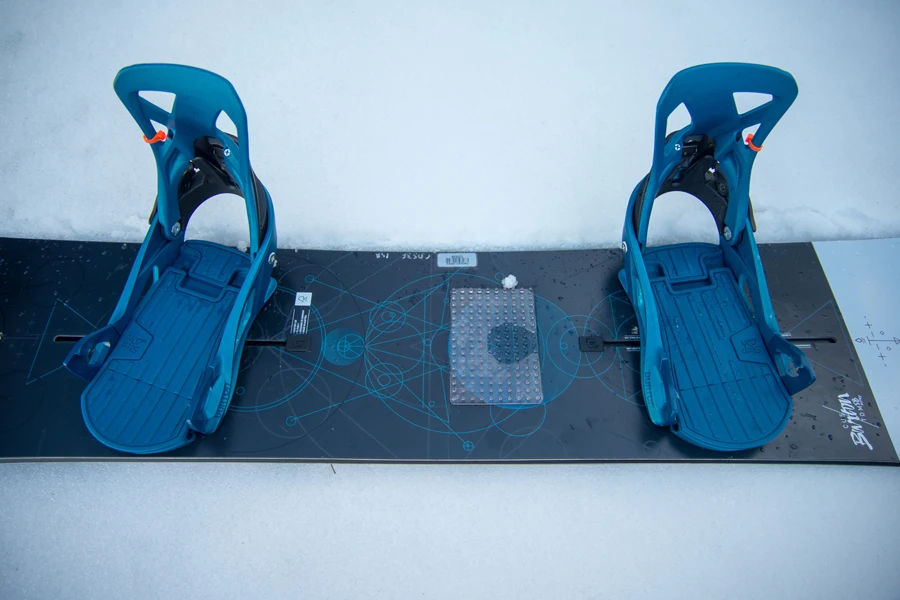
Step-On Bindings: A newer system that allows riders to step directly onto the binding and click into place without straps.
Compatibility: Step-On bindings require specific boots designed for the system. These boots have special features that lock into the bindings. Retailers offering Step-On bindings must clearly communicate the need for compatible boots and preferably offer them as a package.
7. Weight
Lightweight Boots: These usually weigh less than 2 to 3 pounds (0.9 to 1.36 kg) per boot. They are typically favored by freestyle and all-mountain riders who value maneuverability and comfort over long periods of wearing. The use of advanced materials and design technologies can reduce the weight without compromising on support or durability.
Heavier Boots: These can weigh more than 3 pounds (1.36 kg) per boot. They are often more rigid and may offer better support and durability, which is essential for aggressive riding styles like backcountry and freeride. The extra weight can be due to additional features like thicker liners, more robust outer materials, or reinforced construction for improved performance in demanding conditions.
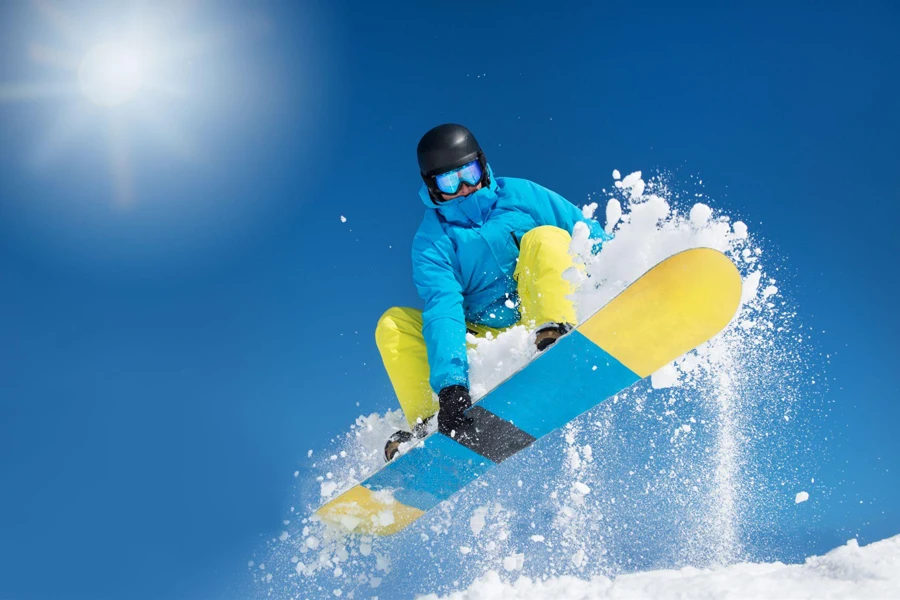
Best Snowboard Boots
Best Overall Snowboard Boots: Men’s Vans Infuse & Women’s ThirtyTwo Lashed Double BOA
Men’s Vans Infuse:
- Flex: Medium to stiff
- Lacing System: Hybrid BOA combines traditional laces with BOA instep adjustment and velcro power strap
- Ride Style: All-mountain
- Experience Level: Advanced to expert
- Features:
- Versatile crusher that can handle all terrain
- Comfortable right out of the box
- Adjustable flex
- Intuitive and thorough lacing system
- Best suited for experienced riders
Women’s ThirtyTwo Lashed Double BOA:
- Flex: Medium (6 out of a 1 to 10 scale)
- Lacing System: Double BOA
- Ride Style: All-mountain
- Experience Level: Intermediate to advanced
- Features:
- Durable construction
- Versatile all-mountain boot
- Easy lacing
- Ample comfort
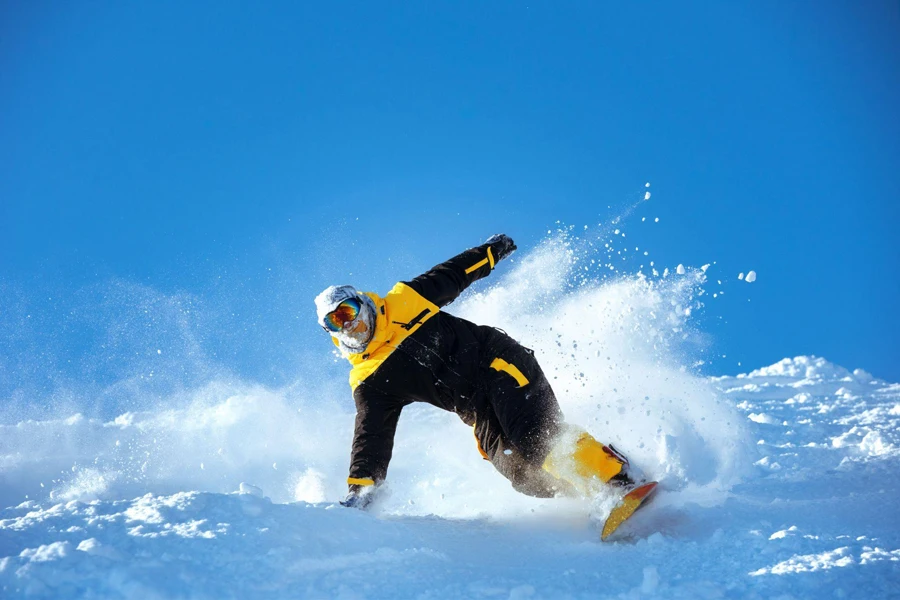
Best Freestyle Snowboard Boots: Men’s DC Phase & Women’s Ride Harper
Men’s DC Phase:
- Flex: Soft (3/10)
- Lacing System: Traditional laces
- Ride Style: Freestyle
- Experience Level: Beginner to intermediate
- Features:
- Affordable and stylish
- Simple design
- Soft-flex rating is ideal for beginner riders and intermediate park riders
- Comfortable to walk in
Women’s Ride Harper:
- Flex: Softer side (3/10)
- Lacing System: BOA
- Ride Style: Freestyle
- Experience Level: Beginner to intermediate
- Features:
- Forgiving for playful tricks and jibs
- Great price
Best Backcountry Snowboard Boots: Men’s K2 Waive & Women’s Vans Viaje Range
Men’s K2 Waive:
- Flex: Stiff (8/10)
- Lacing System: BOA ankle harness, traditional laces with integrated lace locks, Velcro power strap
- Ride Style: Freeride, backcountry
- Experience Level: Advanced to expert
- Features:
- Construction geared toward designated backcountry use
- Highly adjustable and comfortable for confident and aggressive riding
- Best soft boot touring mode tested
Women’s Vans Viaje Range:
- Flex: Medium to stiff (adjustable flex)
- Lacing System: Double BOA
- Ride Style: Backcountry, freeride focus
- Experience Level: Advanced to expert
- Features:
- New adaptive walk mode feature on cuff for skiing uphill
- Keeps feet warm even in subfreezing temperatures or transitioning at the top of a climb
- Outsoles have an aggressive lug around the perimeter for great traction and stability
- Tongue stiffeners allow customizable flex that ranges from 6 to 9
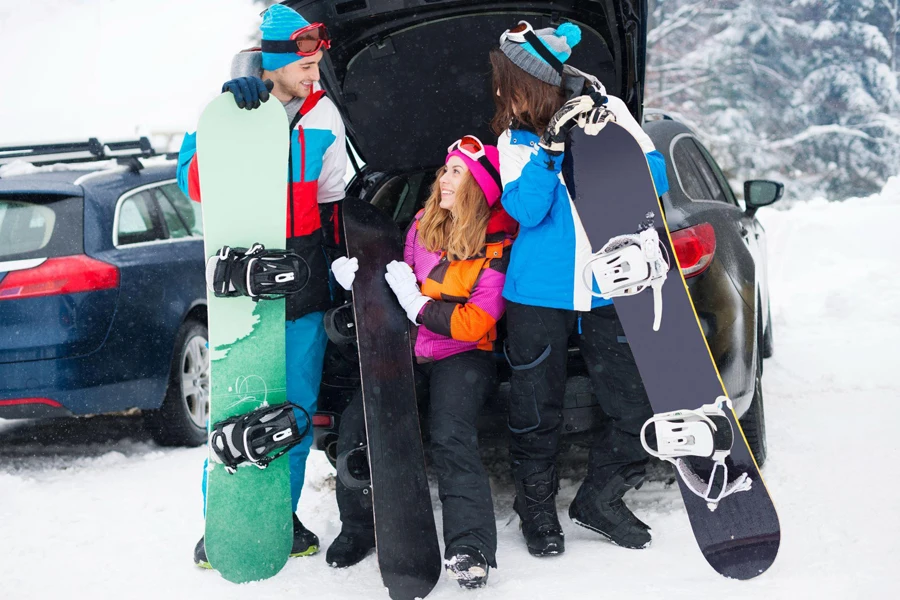
Conclusion
The 2024 snowboard boot selection offers a variety of innovative options to enhance every rider’s experience on the slopes. From fit and comfort to flex and responsiveness, the right pair can significantly boost your performance and enjoyment. Consider your riding style, terrain preference, and the latest technologies as you choose your perfect match. Embrace the upcoming season with boots that promise to support every turn, jump, and ride down the mountain.




